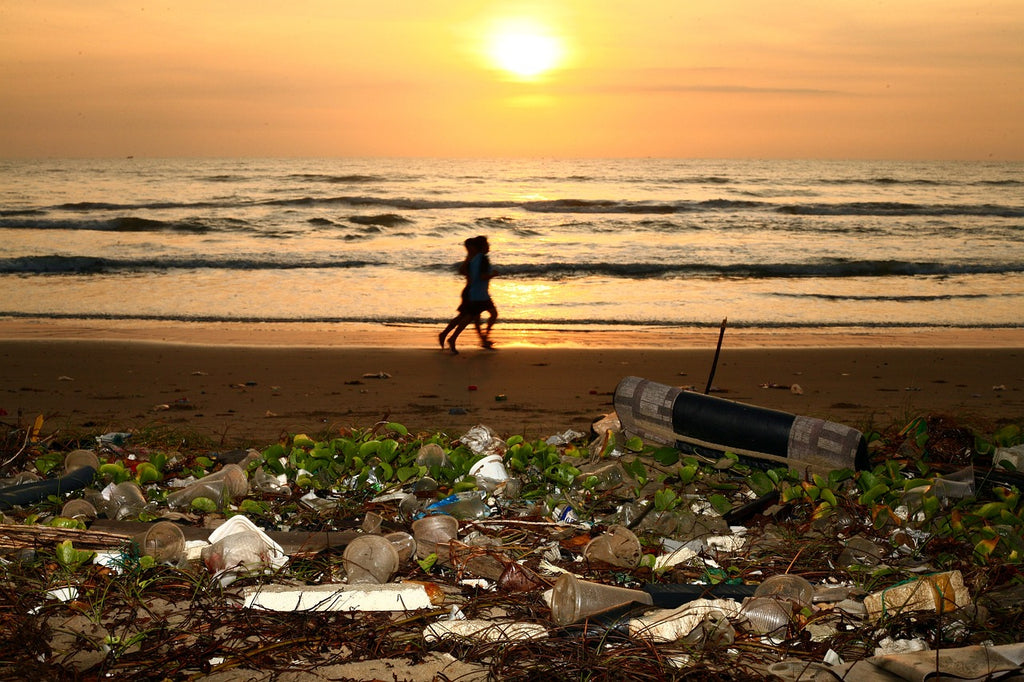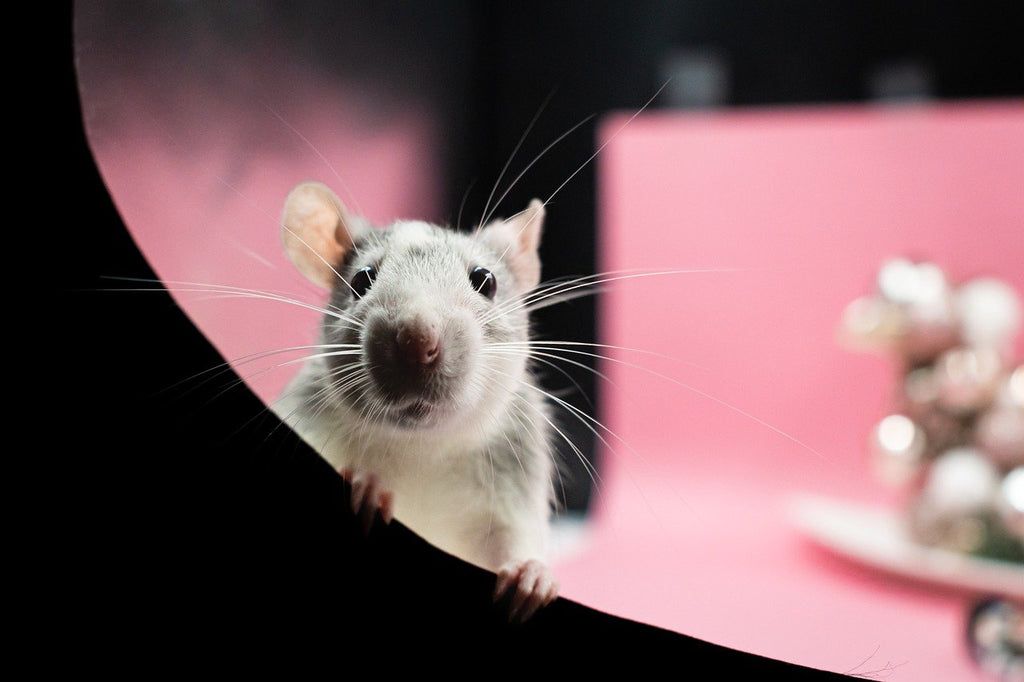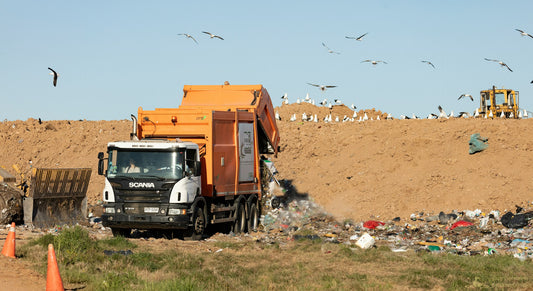If you're reading this, we probably don't have to tell you about the state our planet is in right now.
You may also already know about the 14 million tons of plastic that end up pollution our oceans every year, or that by 2050 we will have more plastic than fish in the ocean.
If you're reading this, you will be asking yourself the questions: How did we come this far? Is plastic evil?
Join us, as we explore this pollution crisis and unpack the true reasons behind it.
For that, let's first take a step back and turn back time a couple of decades.
How it all Started: The Invention of Plastics

The first synhetic plastic was invented during the 19th century by Belgian scientist Leo Baekeland. His invention Bakelite was celebrated across the world, because the new material could be mass produced and was affordable.
As a matter of fact, in the beginning even environmental advocates celebrated the invention. Plastic promised to replace animal products or wood for many of its applications.
Prior to the invention of plastics, many products for example still used materials like ivory, rhino horn, or turtle shells for their production.
The first products made from Bakelite were a huge success and they sparked the interest by industry giants like Dow Chemicals and ExxonMobil, who sensed the opportunity to market their byproducts from oil production for this new wonder material.
Their research resulted in the invention of Polyethylene, which is still one of the most widely used plastic today. Others followed with the invention of Nylon and Teflon.
The biggest push for plastic production came during the Second World War, when all parties ramped up the production of equipment with plastic, because it was easier, cheaper, and more durable than other materials. Countless items were replaced with plastic, from synthetic fiber for bulletproof vests to acrylic glass in planes. The light and durable plastic proofed useful for many applications in war.
After World War II, the rise of plastic was unstoppable, as more and more giant corporations jumped the bandwagon.
Plastic production exploded and is still on the rise. From 1.5 million tons produced globally in 1950, we are now producing 400 million tons every single year. And there is no end in sight. Every year marks a new record high and we are on path to reach 1200 million tons by 2060.
But how did it come this far?
The Inception of Consumerism

While the first applications of plastic replaced products like telephones or radios for long-term use, the post-war era sparked different trends that quickly turned plastic from super hero to villain.
Plastics took over the world by storm.
Chasing Cheaper Production
More and more consumer goods companies realized that the new material can replace more expensive alternatives like glass, metal, natural fiber, and paper in their products. Plastic was cheaper, lighter, and more durable for transport, promising drastically reduced costs for corporations.
The famous glass milk jar got replaced with a plastic jug, the iconic coke bottle got replaced by a PET bottle, and shopping baskets got replaced by single use plastic bags.
Soon, plastic found its way into every area of our lives and replaced a majority of packaging in all industries. Today, it is almost impossible to go on a regular grocery run without being bombarded with throw-out plastics.
Fueling Unsustainable Consumerism
Additionally, the plastic boom came exactly at the right time. While The Great Depression had crippled the world economy and consumerism was derided, the time between 1950 and 1960 is known the "Golden Age of Consumerism" in the west.
Consumerism is "the theory that consumer spending, or spending by individuals on consumer goods and services, is the principal driver of economic growth and a central measure of the productive success of a capitalist economy."
New post-war prosperty and dedicated marketing painted consumerism as the way to improve standards of living and life itself. Concepts like outsoucing that had been enabled by the new peace made life more affordable and consumerism was soon established as the core concept of our economy.
So why is consumerism causing plastic pollution?
Consumerism and Plastic Pollution

Consumerism is to plastic pollution like kerosene to a fire. Our whole economy evolves around driving consumption and understanding what drives consumers to keep buying.
And businesses are extremely good at making consumers buy.
Convenience
One of the key concepts is making consumers' lives as convenient as possible, appealing to the instinctive purchase decisions.
In today's world, our brains are overwhelmed by external influences. We wake up to the newsfeeds and notifications on our social media accounts, we are bombarded with advertisements wherever we look, and our brains are already at capacity, before we even make it through half our day. Add a stressful job and busy family life, and you have the perfect victim for skillful marketers.
Marketers have spent billions on campaigns that exploit this brain orverload by driving the consumers' desires for convenience. By appealing to the most basic needs and instincts, consumers are lured into always taking the path of least resistance.
Just look at the food delivery and take away market, which has more than tripled between 2017 and 2022 and is on track to double again by 2027.
A few decades ago it was completely normal to go to the farmers market and the local butcher to then cook a meal at home. Now services like Uber Eats, Amazon Prime, or Take Away restaurants have taken the market by storm.
This convenience culture has significantly contributed to the global plastic pollution problem. Consumers often prioritize convenience and ease of use over sustainability considerations, leading to the widespread use of single-use plastics in various applications, such as food packaging, personal care products, and household items.
But convenience is not the only concept that drives unsustainable consumerism.
The Rat Race

Consumerism in its core is built around the concept of always wanting more.
Before the industrial revolution, people were self-sufficient. They farmed their own food and weaved their own clothes. With rising wages, people started to crave more status, buy the bigger home, better car, or better clothes.
The problem is: wanting more stuff never stops. When TVs came around, people saw fancy celebrity lives and wanted that too. The internet exposes us to flamboyant celebrity lifestyles even more and we're stuck in a rat race for more status, more products, more everything.
Even if you have a lot, you still want more, especially when you see others with more. People work hard to buy things, but it never feels like enough. We've gotten a lot better at living longer and having nice things, but we still feel unhappy because some people have a lot more than us.
The rat race has led to concepts like fast fashion and planned obsolescence that constantly introduce newer and better things to give consumers yet another reason to swipe their credit card.
The strategy of planned obsolescence involves intentionally designing products to become obsolete or useless within a known timeframe, ensuring that consumers will need to replace them in the future. This can be achieved by introducing superior replacement models or intentionally designing products to stop functioning properly within a specific timeframe, ultimately driving demand for newer versions.
While a few decades ago is was normal to wear your clothes until they tear apart and use your phone for many years, products today are designed to be obsolete.
The Conclusion: Is Plastic Evil?
We've set out today to answer the question if plastic is evil.
The answer is: Plastic is just a material. Exploiting plastic is what makes it evil.
In the end the connection between buying stuff and the mess we're in is pretty simple. the more we buy, the more waste we produce.
The problem is that the stuff we buy is often packaged in plastic, or contains plastic, because it is a cheap and versatile material. While new materials and replacing plastic pacakging with more sustainable alternatives will alleviate plastic pollution, it will not solve the viscious cycle of overconsumption.
We always want more, because it makes us feel good for a short moment. We strive for convenience, because we're overwhelmed by our lives.
Only if we rethink our relationship to consumption, we can imagine a future without pollution. A future where sustainability takes precedence over excess and convenience.
A future where we can explore what really makes us happy beyond the quick high of consumption.
What do you think? Are we consuming too much?
If you want to engage in the discussion, feel free to leave a comment below.
We hope you enjoyed this article. If you want to read more like this, make sure to check out our Blog and follow us on Instagram. If you are interested in truly sustainable products, check out our Shop.







